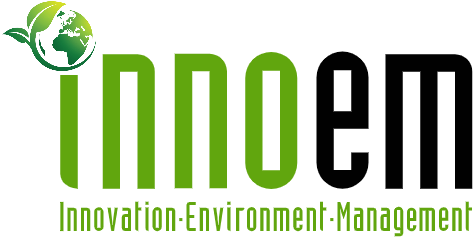Over the last year, I’ve had the distinct pleasure of rounding up the week’s most influential and eye-catching circular headlines. From single-use plastics bans to an upcycled food certification, it’s been a momentous year for the circular economy, supply chain shenanigans and safety concerns notwithstanding.
Much like the snow outside, the slow but steady progress of circularity shows no signs of stopping. So with a healthy dose of cocoa in my cup and a proverbial rear view mirror in my gaze, I’m delighted to share my final hot takes for 2021. Here’s my vote for the year’s three most impactful trends in circularity:
1. Policy begets unexpected progress
A constant drumbeat across the sustainability sector — and at any GreenBiz conference — is the agreement that policy is a critical driver for the future we hope to achieve. In the case of 2021, circularity has started to prove the rule.
The Right to Repair movement saw traction across the pond, as repairability scores for electronics rolled out in France, appliances gained repair protections in Britain and the EU proposed universal charging cords for smartphones.
Meanwhile on our side of the Atlantic: The first electronics right to repair bill was passed in New York state, a national repair bill was filed in congress and President Joe Biden signed an executive order to ensure repairability for farming equipment. The Federal Trade Commission even weighed in with an exhaustive 55-page report, rejecting manufacturers’ excuses for imposed repair restrictions.From single-use plastics bans to an upcycled food certification, it’s been a momentous year for the circular economy.
Extended Producer Responsibility (EPR)also made state history, when Maine became the first state to pass a consumer packaging EPR bill, with Oregon quickly following suit. And in California, no fewer than seven recycling and composting bills were signed into law — perhaps the most notorious of which will require packaging donning the chasing arrows symbol to actually be recycled in practice.
At the federal level, a national EPR bill was introduced and recycling was thrown a political bone when the Department of Energy invested $14 million in recycling research and the newly passed Infrastructure Bill unlocked $350 million in grants for recycling.
Finally, PFAS came under scrutiny when Vermont banned forever chemicals from select products, the EPA outlined PFAS limitations and regulations and the PFAS Action Act of 2021 cleared the House.
So what’s so unexpected? This entirely non-exhaustive list speaks to a pivotal year. But what excites me most is not the movement and passage of legislation — joy-inducing though it is — it’s the ripple effects that follow across industry and sector. Take PFAS for example: As forever chemicals made their way under the political magnifying glass, coverage and attention followed, and, while legislation didn’t require it, major brands from VF Corporation to McDonalds and beyond made announcements to ban or limit their PFAS dependencies.
Similar ripples followed for the Right to Repair movement: After years of active resistance, heavy-hitters in the electronics industry began to show a change of heart when it came to repair. Policy may not yet demand it, but both Apple and Microsoft have agreed to make parts and manuals more accessible for consumers. For those in the know, this reversal was shocking (and a huge deal.)
Of course, legislative movement is not the only driver here. Years of activism, pressure and hard work have helped catapult many of these wins. But the splash of policy creates waves across industry. While the line from bill to brand action is not always a straight shot, the undeniable impact of policy change remains clear in 2021.
2. Resale continues to steal the show
If you’re a frequent reader of the roundup, it’ll come as no surprise that my second trend of 2021 reflects the explosive growth of resale. Growing 25 times faster than the retail market and projected to be double the size of fast fashion by 2030, resale stole headlines and hearts throughout the year.
Want proof? Look no further than the highly anticipated and even more highly covered IPOs for Poshmark and ThredUp. The market debuts of these popular secondhand e-commerce platforms garnered $7.4 billion and $1.3 billion valuations, respectively — but that’s not where the jaw-dropping coverage stopped.Will resale help curb consumption and, by association, the outsized environmental impact of garment production and the fashion industry writ large?
Money poured into the market like it was going out of style: Kering invested $216 million in French resale marketplace Vestiaire Collective; Resale service provider Trove raked in $77.5 million in Series D funding; Lithuanian second hand fashion platform Vinted raised $283 million. And proving that the popularity wasn’t exclusive to the fashion world, Back Market, a French e-commerce platform for refurbished electronics, raised $312 million.
Making acquisitions in the space, Etsy dropped $1.62 billion to purchase secondhand clothing app Depop and ThredUp set eyes on the European market when it acquired Remix, a popular fashion resale platform in the EU.
And in case that’s not enough accolades for you, consider the number of brands that announced a resale pilot, project or partnership this year. Just to name a few: Nordstrom; Lululemon; Nike; Madewell; Timberland; IKEA; H&M; NewBalance; Crocs; Diesel; Adidas; Fabletics; and Vera Bradley are among them.
Will 2022 prove another explosive year for resale? All signs point to yes. The question that lingers for me is if resale will help curb consumption and, by association, the outsized environmental impact of garment production and the fashion industry writ large. So far, the answer seems murky.
3. Reports uncover plastics’ dark underbelly
Last but not least, it was a year of uncomfortable truths for the plastics industry. With new statistics and evidence in tow, numerous reports raised red flags and troubling revelations for both population and planet.
Among the reports were several causes for concern should we continue plastic-consumption-as-usual. A report published by Google revealed that maintaining the status quo would result in a terrifying 7.7 gigatons of plastic waste being landfilled, incinerated or leaked into the environment by 2040 — equivalent to 16 times the weight of the entire human population on earth today. Meanwhile a Beyond Plastics report outlined that greenhouse gas emissions from plastic production are set to outpace those from coal plants by 2030.

A study by the American Chemical Society further revealed that about 24 percent of the 10,400 chemicals identified in plastics are “substances of potential concern” and can be toxic, even in small doses. But lack of research means 49 percent of the chemicals cannot be properly categorized, making their safety — or lack there of — unknown.
Unfortunately, as we barrel towards the new year it appears we’re not on track for a variety of packaging commitments intended (in part) to curb plastic production. According to new research, 90 percent of 2025 packaging commitments will not be met, and the 2022 recycled content commitments in California look unlikely as well.
Looking for culprits, a Greenpeace report pointed fingers at CPGs for failing to reduce single-use plastic packaging; a study by the Minderoo Foundation identified 20 companies responsible for 55 percent of global single-use plastic waste; a Portfolio.earth report exposed banks’ role in providing $1.7 trillion in plastic production funding; and a study by the National Academies of Sciences, Engineering and Medicine revealed the U.S. as the largest consumer of plastic globally.
My hope for 2022 and beyond is a change in the plastic tide. If brands intend to meet the 2025 packaging goals they’ve so loudly and proudly made, they need to start acting like it — starting by reversing dependency on this toxic, carbon-emitting material.
The honorable mentions
While plastics, policy and resale took home the top slots for 2021, I would be remiss not to note the trend runner-ups of a newsworthy year. Here are my honorable mentions:
- Battery recycling gained steam with investments and brand announcements abound.
- Material innovation was the new “it trend” in fashion, garnering almost as many headlines as resale.
- Recyclability claims came under scrutiny, with numerous lawsuits and settlements throwing question marks at the chasing arrows.
With that, I tip my hat to quite the year of coverage — it certainly was one for the books. See you for another year of circular advancement and adventure in 2022.
Source : https://www.greenbiz.com/article/3-most-impactful-circularity-trends-2021

